
Carlos James Lozada was a member of the United States Army who was one of five Puerto Ricans who received the Medal of Honor during the Vietnam War.

David Charles Dolby was a United States Army soldier who received the U.S. military's highest decoration, the Medal of Honor, for his actions in the Vietnam War.
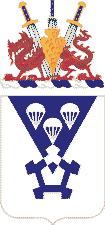
The 503rd Infantry Regiment, formerly the 503rd Parachute Infantry Regiment and the 503rd Airborne Infantry Regiment, is an airborne infantry regiment of the United States Army. The regiment served as an independent regiment in the Pacific War during World War II; at Fort Campbell, Kentucky; in Okinawa, Japan; and in Germany. Regimental elements have been assigned to the 2nd Infantry Division, the 11th Airborne Division, the 24th Infantry Division, 25th Infantry Division, the 82nd Airborne Division, 101st Airborne Division, and the 173rd Airborne Brigade Combat Team. Regimental elements have participated in campaigns in the Vietnam War, Operation Enduring Freedom–Afghanistan, and Operation Iraqi Freedom. The regiment claims 15 Medal of Honor recipients: two from World War II, ten from Vietnam, and three from Afghanistan. A parent regiment under the U.S. Army Regimental System. The regiment's 1st and 2nd Battalions are active, assigned to the 173rd Airborne Brigade, based at Caserma Ederle, Vicenza, Italy. The 3rd and 4th Battalions as well as Companies E, F, G, H, and I have been inactived.
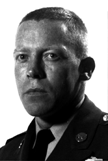
Joe Ronnie Hooper was an American who served in both the United States Navy and United States Army where he finished his career there as a captain. He earned the Medal of Honor while serving as an army staff sergeant on February 21, 1968, during the Vietnam War. He was one of the most decorated U.S. soldiers of the war and was wounded in action eight times.

Alfred Velazquez Rascon is a retired United States Army lieutenant colonel. In 2000, he was awarded the Medal of Honor—the United States' highest military decoration—for his actions as a medic near Long Khánh Province during the Vietnam War.

Gary Burnell Beikirch was a United States Army soldier who received the United States military's highest decoration, the Medal of Honor, for his actions during the Vietnam War. A combat medic, Beikirch was awarded the medal for exposing himself to intense fire in order to rescue and treat the wounded, and for continuing to provide medical care despite his own serious wounds, during a battle at Dak Seang Camp.

Lloyd G. McCarter was a Private in the 503rd Parachute Infantry Regiment of the United States Army who was awarded the Medal of Honor during the battle to recapture Corregidor Island in the Philippines.
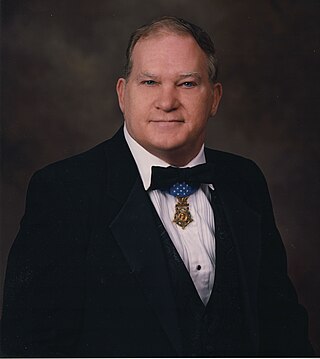
John Franklin Baker Jr. was a United States Army Master Sergeant who served in the Vietnam War and a recipient of the Medal of Honor.

John Andrew Barnes III was a soldier of the United States Army during the Vietnam War. He was posthumously awarded the Medal of Honor for his actions during the Battle of Dak To.
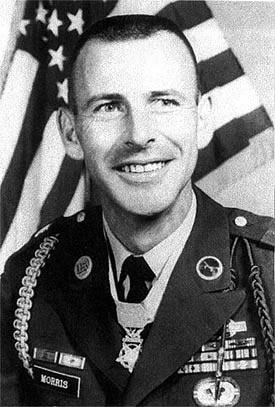
Charles Bedford Morris was a United States Army soldier and a recipient of the United States military's highest decoration—the Medal of Honor—for his actions in the Vietnam War.

Don Leslie Michael was a United States Army soldier and a recipient of the United States military's highest decoration—the Medal of Honor—for his actions in the Vietnam War.

Frank Aloysious Herda was a United States Army soldier and a recipient of the United States military's highest decoration, the Medal of Honor, for his actions in the Vietnam War.
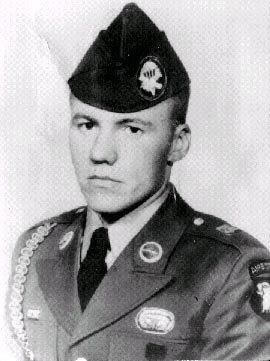
Glenn Harry English Jr. was a United States Army soldier and a recipient of the United States military's highest decoration—the Medal of Honor—for his actions in the Vietnam War.
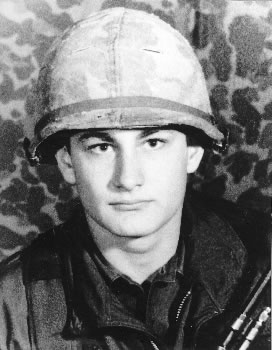
Michael Reinert Blanchfield was a United States Army soldier and a recipient of the United States military's highest decoration—the Medal of Honor—for his actions in the Vietnam War.
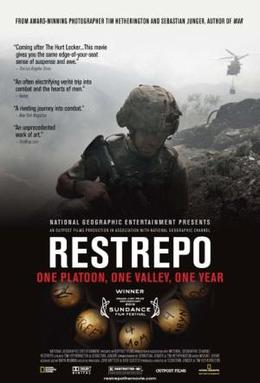
Restrepo is a 2010 American documentary film about the War in Afghanistan directed by British photojournalist Tim Hetherington and American journalist Sebastian Junger. It explores the year that Junger and Hetherington spent, on assignment for Vanity Fair, in Afghanistan's Korengal Valley, embedded with the Second Platoon, B Company, 2nd Battalion, 503rd Infantry Regiment, 173rd Airborne Brigade Combat Team of the U.S. Army. The Second Platoon is depicted defending the outpost (OP) named after a platoon medic who was killed earlier in the campaign, PFC Juan Sebastián Restrepo, who was a Colombian-born naturalized U.S. citizen. The directors stated that the film is not a war advocacy documentary, they simply "wanted to capture the reality of the soldiers."

Salvatore Augustine Giunta is a former United States Army soldier and the first living person since the Vietnam War to receive the United States Armed Forces' highest decoration for valor, the Medal of Honor. Giunta was cited for saving the lives of members of his squad on October 25, 2007, during the War in Afghanistan. He left the United States Army in June 2011.

Ty Michael Carter is a retired United States Army staff sergeant and a Medal of Honor recipient. He was awarded the United States Armed Forces' highest military honor for his actions during the 2009 Battle of Kamdesh in Afghanistan. Carter left active duty in September 2014.

Ryan Pitts is a former United States Army soldier and the ninth living recipient of the Medal of Honor from the War in Afghanistan.

The Aranas ambush was an attack by the Taliban against a US-Afghan patrol returning from a tribal meeting. The Taliban inflicted heavy casualties on US-Afghan forces, and the Americans managed to evacuate with their wounded in the darkness.
























